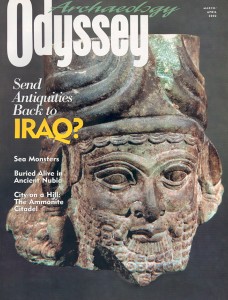The Amman Citadel: A Century of Excavations
Sidebar to: “Rabbath of the Ammonites”
Although ancient Amman was visited by numerous 19th-century explorers, it was not until the British surveyor Claude R. Conder arrived at the site in 1881 that it began to receive systematic examination.
In 1904, the Princeton Archaeological Expedition under the direction of Howard Crosby Butler began an even more comprehensive documentation of the town’s standing ruins. The Princeton survey, with its careful mapping of ruins in Amman and elsewhere in Transjordan, was published in 1921.
An Italian expedition, led first by Giacomo Guidi and later by Renato Bartoccini, conducted the first actual excavations in Amman from 1927 to 1938, when World War II intervened. This team focused mainly on the upper terrace, especially the northern temple precinct and the Temple of Hercules. Unfortunately, the results of the Italian excavations have been published only in sketchy preliminary reports, and do not provide much information about what was excavated.
Because of the increase in Amman’s population, excavations since the Italian expedition have concentrated primarily on the Citadel. In 1949, G. Lankester Harding, then director of Jordan’s Department of Antiquities, carried out a salvage operation in the center of the upper terrace, where the Amman Archaeological Museum was to be built. Periodic soundings were made in the late 1960s and early 1970s, and then in 1975 a major initiative was launched by the British School of Archaeology under the direction of Crystal Bennett. Four seasons were completed through 1978, with excavations confined to the area north and west of the archaeological museum. Bennett’s team produced a wealth of material, including substantial remains from the Byzantine and Umayyad periods.
Already a library member? Log in here.
Institution user? Log in with your IP address.

